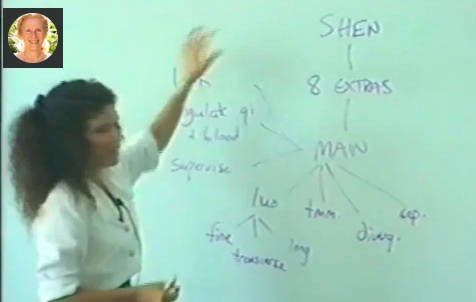Welcome
This may be too advanced – but I have added in what will be helpful should you wish to dive in further – and it will be contradictory. Acupuncture is energy. NOT Linear. On top of this – egos seem to have gotten involved. I will go back to – does it work? And when it does – I teach that and what was said by who – and where they came from – so you get a better idea. Context.
A useful beginning – The meridians (Jing) and collaterals (luo) are the pathways in which Qi (vital energy or vital force, pronounced ‘chee’) and blood circulate. They form a specific network which communicates with the internal organs and limbs and connects the upper to the lower and the exterior portions of the body.
Luo points – TCM version Luo Connecting Points are where a separate channel splits off from the main flow and connects with the Yin/Yang paired meridian. Can be used to diagnose and treat channel problems based on fullness (pain, heat) or emptiness (stiffness, weakness). May be used to treat the Yin/Yang paired organ.
Maybe . . see them as connectors – at different levels. I was taught three different versions and expect as Dr van Buren was a master – it is so. Longitudinal, traverse and superficial (skin Luo). I am not sure that the latter can be found. The longitudinal are in the classics all my source texts are MIA presently and likely what we can find online is somewhat edited for now (much like the King James version of ‘The Bible’).
Very interesting (Feb 2022 – researching online – so much is dumbed down/written – see more here (CLICK) Some is below
(Renamed Luo) Junction Points
Like Source Points, Junction (Luo) Points are also Command (were also called Shu) Points. Junction Points are representative of the the connection between paired officials, sometimes referred to as “connecting points”. We can liken Junction Points to adjoining rooms of a hotel. Each official is in charge of opening their own door to the other. The Junction Points are a way for the paired officials to share energy with each other and create balance. Both the Yin official and the Yang official need the same amount of energy. When the door is opened on the deficient side, energy flows out from the abundant side until balance is achieved.
We identify the imbalance in paired officials through the pulses. We will experience a “split” meaning that the pushes within a pair are not the same. We treat this “split” and imbalance through needling the Junction Point of the deficient official in the pair, allowing the gates to open and the pair to find equilibrium. A “split” should be treated anywhere it is found, regardless of the CF. Once a “split” is identified, it should be the primary target of treatment. After completing this type of treatment and rechecking the pulses, the paired officials should present with the same pulse. Paired officials can generate more energy when they are in balance with equal energy. Paired officials work together for the well being of the Element, thus it is vital for us to encourage balance between the two. It is important for us to focus upon the concept of balancing, rather than the idea of raising the energy of both Officials. Harmony among Officials is associated with the system becoming happier.
The Junction Points: Heart 5 – Penetrating Inside, Small Intestine 7 – Upright Branch, Bladder 58 – Fly and Scatter, Kidney 4 – Great Bell, (Pericardium) Circulation Sex 6 – Inner Frontier Gate, Triple Heater 5 – Outer Frontier Gate, Gall Bladder 37– Bright and Clear, Liver 5 – Insect Ditch, Lung 7 – Narrow Defile, Large Intestine 6 – Side Passage, Stomach 40 – Abundant Splendor, and Spleen 4 – Princes Grandson – not sure about that translation – not heard before).
Hierarchy of the meridians

Very interesting to see what is online – and who sees themselves as experts – it is shame the masters have no voice . . AND mostly the medicos take acu on as a hobby – and seem to think the body paradigm fits the Qi one- not so . .
1998 – before TCM took over too much (CLICK)

Maybe review this first . .
Layers of the body – energy above – and thus
SKIN – at the very surface (I suspect are the energy component of micro bleeding substance).

A brief go-around . .
This may be a little too hard to grasp – start with me always as having taught the subject since 1981
Luo – (CLICK) also Luo (CLICK)
This article (CLICK) shows that few taught TCM (even when the teachers themselves) are aware of what was taught a few short decades ago – classical and in the actual texts – and from CLINICAL masters.
Luo Points – this is transverse
Luo Connecting Points Theory and Applications (CLICK)
- Luo Connecting Points are where a separate channel splits off from the main flow and connects with the Yin/Yang paired meridian.
- Can be used to diagnose and treat channel problems based on fullness (pain, heat) or emptiness (stiffness, weakness).
- May be used to treat the Yin/Yang paired organ.
- May be used to treat emotional disharmonies.
- There are 4 group luo points which are used in cases where 3 related meridians are imbalanced.
- There are 16 connecting channels: 1 for each of the 12 meridians, a great luo point for the ST as well as the SP in addition to their regular luo points, 1 for the CV and 1 for the GV.
- LU separates at LU 7, follows the LU channel into the palm, spread through the thenar eminence and connects with the LI
- LI separates at LI 6, joins the LU meridian, ascends the arm going through LI 15 to the jaw where it divides, one branch going to the teeth and the other enters the ear
- SP separates at SP 4, connects with the ST meridian, ascends up the medial aspect of the leg and connects with the Stomach and intestines
- SP Great Luo separates at SP 21, spreads through the chest and the lateral costal region
- ST separates at ST 40, joins the SP, ascends the leg and continues to the base of the neck where it joins the Qi of the other yang channels and terminates in the throat
- ST Great Luo is sometimes seen as a throbbing below the left breast and connects with the LU
- HT separates at HT 5, joins the SI, follows the HT meridian to the HT and continues to the root of the tongue and into the eyes
- SI separates at SI 7, joins the HT, ascends the arm at connects with LI 15
- KD separates at KD 4, encircles the heel and enters internally connecting with the UB, follows up to a point below the heart and travels posteriorly spreading into the lumbar region
- UB separates at UB 58, connects with the KD meridian
- PC separates at PC 6, connects with the TH, ascends along the TH and connects with the PC and the HT
- TH separates at TH 5, travels up the posterior aspect of the arm and joins the PC in the chest
- LV separates at LV 5, connects with the GB and travels up the legs to the genitals
- GB separates at GB 37, connects with the LV, descends and disperses over the dorsum of the foot
- CV separates at CV 15, descends and disperses over the abdomen
- GV separates at GV 1, ascends bilaterally along the sides of the spine to the base of the neck, spreads out over the occiput
Luo Connecting Points Chart – (Point Details)
| LU | LU7 | LI | LI6 |
| SP | SP4 | ST | ST40 |
| HT | HT5 | SI | SI7 |
| KI | KI4 | UB | UB58 |
| PC | PC6 | SJ | SJ5 |
| LR | LR5 | GB | GB37 |
Yuan Luo – Guest/Host – Point Combinations in Clinical Practice
- If a meridian is deficient you tonify the Yuan Source point and disperse the Luo Connecting point on it’s Yin/Yang paired meridian
- If a meridian is excess you disperse the Yuan Source point and tonify the Luo Connecting point on it’s Yin/Yang paired meridian
- Some Examples:
- LI 4 (source) w/ LU 7 (luo) – sore throat, nasal congestion, colds and respiratory flu
- LU 9 (source) w/ LI 6 (luo) – acute upper body edema
- SP 3 (source) w/ ST 40 (luo) – phlegm
- HT 7 (source) w/ SI 7 – psycho-emotional issues
- KD 3 (source) w/ UB 58 (luo) – lower back problems, weakness in the lower limbs
- LV 3 (source) w/ GB 37 (luo) – eye problems caused by LV disharmonies
Luo – longitudinal
I will have to find as this seems a step too far
Luo – Skin
Look to my microbleeding work
